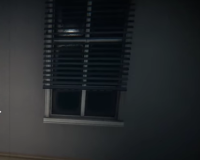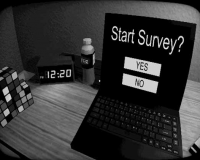
Advertisement
The Condition
The Condition begins with relocation. You have moved into a small two-story house for a set period. The agreement seems ordinary except for one clause: you must not open a specific door. No reason is given, and no explanation follows. The house is quiet, partly furnished, and dimly lit. During the first week, nothing unusual happens. The sense of peace is stable but fragile, as if it depends on your compliance. Then the rhythm begins to change. Items shift slightly when you return to rooms, and the light behaves differently each evening. The house observes your attention.
The Slow Distortion
Days pass without clear events, yet the atmosphere alters. Each return to familiar spaces reveals a difference—an angle, a reflection, or a sound that wasn’t there before. The Condition does not present threats directly; it allows routine itself to become suspect. The central tension lies between caution and curiosity. The locked door becomes more noticeable precisely because you try to ignore it. Its presence alters the meaning of every action. Sleep becomes brief, meals feel mechanical, and the distance between imagination and reality fades until you can no longer distinguish them.
The Pattern of Experience
The game’s structure follows a loop that defines how the player interacts with the environment:
- Explore the house during the day and observe small changes.
- Record details or note irregularities that repeat.
- Avoid or approach the forbidden door according to impulse.
- React to noises or movements during the night cycle.
- Decide whether to complete the stay or break the rule.
This cycle repeats until one choice ends it. Each iteration deepens the uncertainty, revealing how perception itself becomes part of the condition.
The Turning Point
The final weeks of residence expose the effect of constant exposure. The line between warning and invitation dissolves. The more you resist the rule, the more it defines you. Sounds concentrate near the forbidden door, and shadows align toward it. At some point, you realize that the instruction was not protection but participation—a rule designed to shape behavior. The Condition turns self-control into performance, showing how restraint can trap as effectively as fear.
When the final day arrives, you must decide whether to open the door. The result remains ambiguous: opening may reveal nothing, while staying obedient leaves the mystery unresolved. The meaning of “condition” shifts from circumstance to state of mind. The game ends with an understanding that the threat may never have existed outside your perception. What remains is a record of reaction—proof that boundaries, once imposed, change what you believe about safety.


















































































